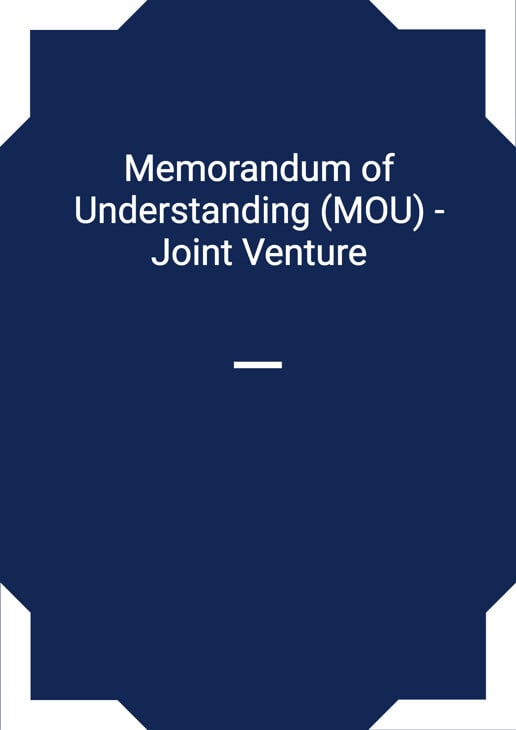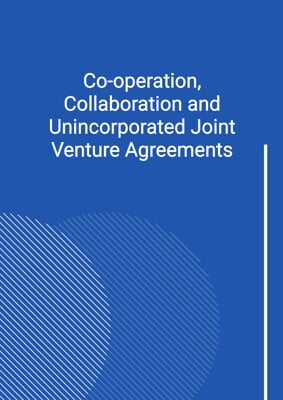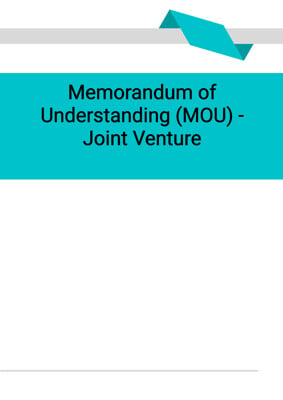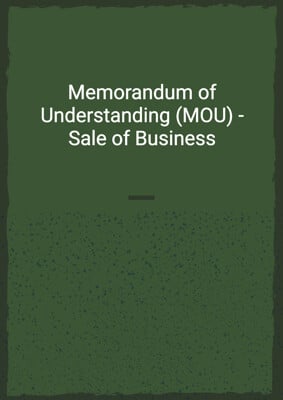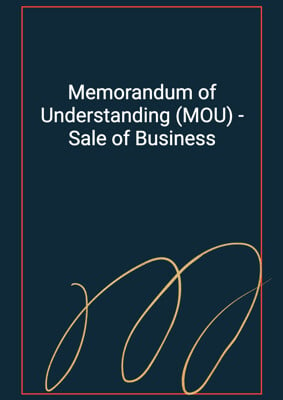How to Tailor the Document for Your Need?
01
Create Document
Fill in the details of the parties. You can click the "Fill with Member’s Information" button to complete it with information saved to your account.
02
Fill Information
Please fill in any additional information by following the step-by-step guide on the left hand side of the preview document and click the "Next" button.
03
Get Document
When you are done, click the "Get Document" button and you can download the document in Word or PDF format.
04
Review Document
Please get all parties to review the document carefully and make any final modifications to ensure that the details are correct before signing the document.
Document Preview
Document Description
The Memorandum of Understanding (MOU) - Joint Venture is a document that outlines the details of a proposed joint venture between two parties. This document helps establish a clear understanding and agreement between the parties, and serves as a foundation for further negotiations and development.
The entire document is divided into several sections. Section 1 introduces the parties involved and their principal places of business. It also emphasizes the parties' mutual interests and the need for a careful review of the detailed terms of the joint venture.
Section 2 focuses on the establishment of a joint venture company. It outlines the intention to create a new jointly-owned company and discusses alternative structures if necessary. The name of the joint venture and its headquarters are also specified.
Section 3 details the activities of the joint venture. It describes the purpose of the joint venture and the possibility of including other technologies and products. The parties are required to draw up an initial business plan, which will be reviewed by the joint venture company's board.
Section 4 addresses the contribution of each party to the joint venture. It denotes the transfer of existing interests and the need to carry on business in the ordinary course until the joint venture is completed. It also discusses the sharing of technology and the licensing of trademarks and names.
Section 5 deals with the valuation of the joint venture. It highlights the importance of finalizing valuation negotiations and agreeing on an appropriate valuation process and methodology. The parties are expected to provide all necessary information for the valuation process and bridge any differences in valuations.
Section 6 focuses on the capital and funding of the joint venture. It states the intention for the joint venture to be self-financing and obtain additional funds from third parties. Each party acknowledges its intention to support the joint venture's business and provides guarantees and undertakings as required.
Section 7 discusses the board and management of the joint venture. It establishes the responsibility of the board for overall management and supervision. The appointment of directors and senior management is also outlined, with a provision for successor appointments based on qualifications.
Section 8 introduces the shareholders agreement, which reserves certain key decisions for mutual agreement between the parties. It also includes provisions on dividend policy, auditors, financial year, management accounts, pre-emption rights, non-competition, deadlock, and dispute resolution.
Section 9 emphasizes the importance of confidentiality and the need for approval of public announcements or press releases, while section 10 addresses dispute resolution and includes a jurisdiction clause.
Section 11 outlines the procedures for giving notices and services between the parties, while section 12 clarifies that no rights are granted to third parties to enforce the terms of the document.
The thirteenth section states that the MOU is not legally binding, except for certain clauses, and serves as a basis for further negotiations and the development of legally definitive agreements.
In short, this is a document aiming for clear understanding and setting foundation for further negotiations and development.
How to use this document?
To use the Memorandum of Understanding (MOU) - Joint Venture effectively, follow these steps:
1. Familiarize yourself with the document: Read the entire MOU to understand its purpose and the principles it sets out for the joint venture.
2. Identify the parties involved: Make sure you have the correct names and principal places of business for both parties.
3. Establish a joint venture company: Determine whether a new jointly-owned company will be created or if alternative structures are necessary. Agree on the name of the joint venture.
4. Define the activities of the joint venture: Clearly state the purpose of the joint venture in the field and discuss the inclusion of other technologies and products. Develop an initial business plan and establish a process for regular review and updates.
5. Determine the contribution of each party: Discuss the transfer of existing interests and the sharing of technology. Consider licensing trademarks and names to the joint venture.
6. Finalize the valuation: Negotiate and agree on a valuation process and methodology. Provide all necessary information for the valuation and bridge any differences in valuations.
7. Address capital and funding: Establish the proportionate equity capital of the joint venture. Aim for self-financing and explore opportunities for obtaining additional funds from third parties.
8. Establish the board and management: Appoint an equal number of directors from each party to the board. Determine the rotation of the chairman position and make initial senior management appointments.
9. Draft a shareholders agreement: Reserve key decisions for mutual agreement between the parties. Include provisions on dividend policy, auditors, financial year, management accounts, pre-emption rights, non-competition, deadlock, and dispute resolution.
10. Seek third-party approvals: Identify any necessary consents or approvals from other partners or regulatory authorities. Cooperate with each other to obtain these approvals.
11. Maintain confidentiality and seek approval for announcements: Keep all information confidential and obtain written approval for any public announcements or press releases.
12. Establish dispute resolution mechanisms: Agree on a jurisdiction clause and ensure that any legal proceedings are served in accordance with the agreed-upon procedures.
13. Keep track of notices and service: Serve any notices in writing and ensure they are delivered to the correct addresses. Notify each other of any changes to contact details.
By following these steps, you can effectively use the MOU to establish a clear understanding and agreement between the parties involved in the joint venture.
Not the right document?
Don’t worry, we have thousands of documents for you to choose from:
